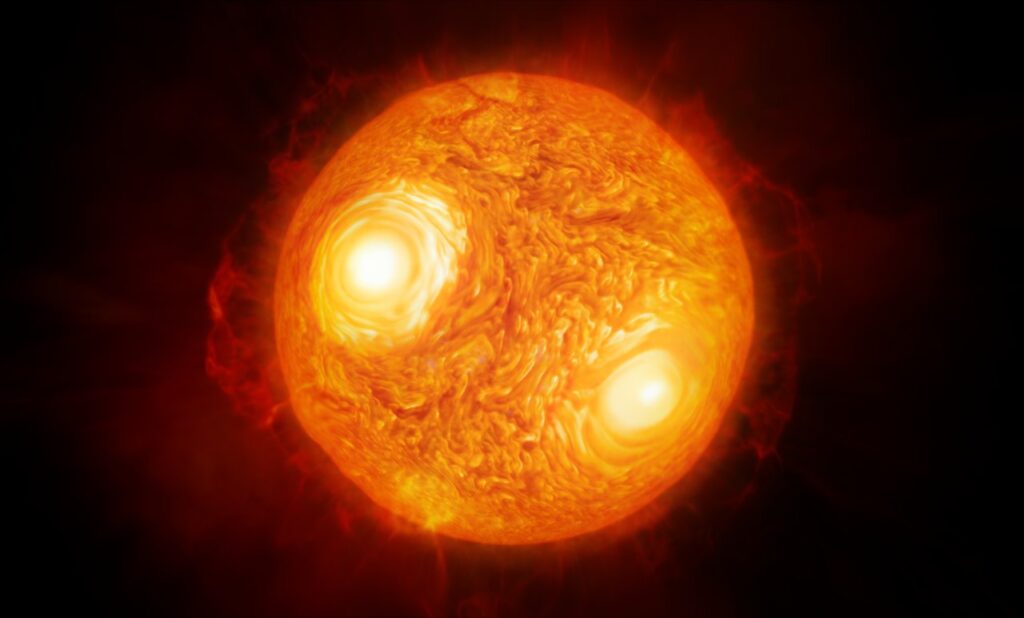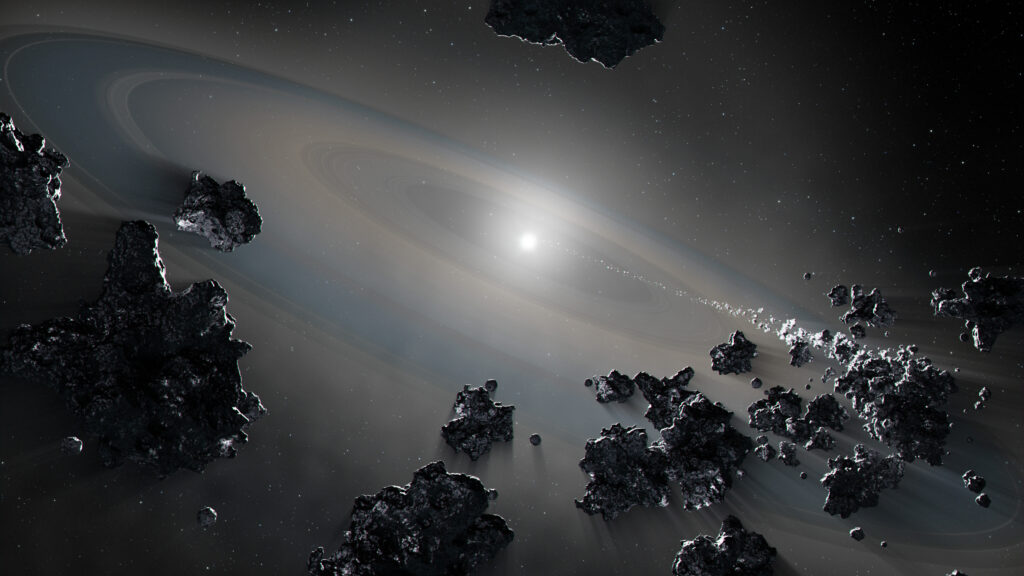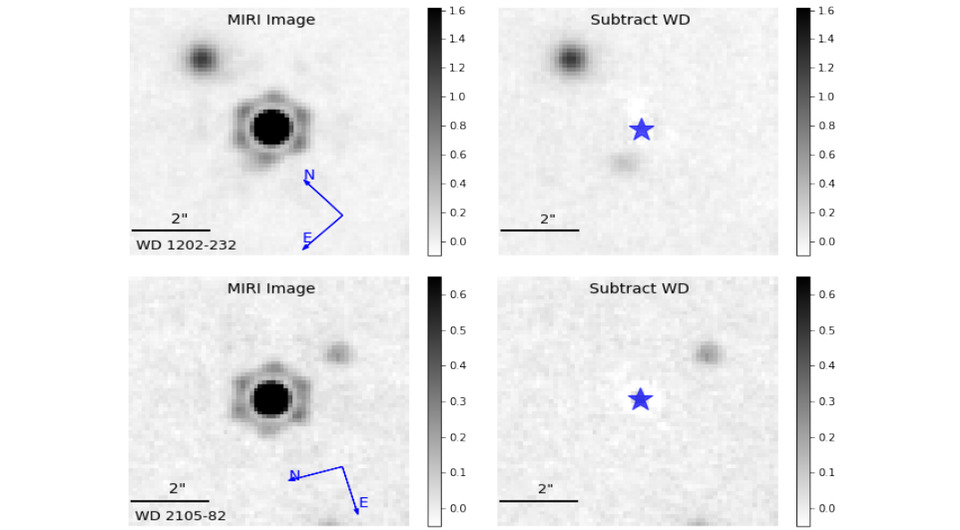Thanks to the James Webb Space Telescope (JWST), astronomers have discovered exoplanet candidates in two white dwarfs. They survived the transformation of their star into a red giant.
Fate of the Sun
The stars, which have a mass of 0.3 to 8 solar, face the same fate. After depletion of hydrogen fuel reserves, they will begin to expand, turning into red giants, simultaneously absorbing exoplanets orbiting around them. Our Sun is no exception. In 7 billion years, it will increase in size so much that it will destroy Mercury, Venus and, most likely, the Earth.

But red giants don’t grow forever. At some point, they shed their shell, after which a core remains of them. It shrinks, cools down and turns into a white dwarf. This means that planets in distant orbits may well survive the death of their star.
Surviving exoplanets
Despite the fact that to date astronomers have managed to detect more than five thousand exoplanets, only a small fraction of them orbit white dwarfs. All the more important is the discovery made by JWST. It could directly photograph two candidates for exoplanets in white dwarfs WD 1202-232 and WD 2105-82. The discovery was made using a MIRI camera.

WD 2105-82b is located 52 light-years from Earth. Its age is estimated at 1.6 billion years. It is believed that it turned into a white dwarf 0.8 billion years ago. The JWST data indicate that at a distance of 34.6 AU from it, there is a gas giant with a mass of 1-2 Jupiter masses. According to astronomers, the exoplanet’s orbit in the past took place at a much closer distance of 9.7 AU from the star.
The white dwarf WD 1202-232 is 34 light years away from Earth. It was formed 0.9 billion years ago, with the total age of the system at 5.3 billion years. The exoplanet orbiting it is also a gas giant, which has a mass in the range from 1 to 7 Jupiter masses. Now its orbit passes at a distance of 11.5 AU from the star, in the past this figure could be 5.3 AU.

So far, both exoplanets are on the list of candidates. But according to the researchers, the probability of a false positive result is only 1 in 3,000. If confirmed, they will become the first directly photographed exoplanets near white dwarfs, similar in characteristics to the gas giants of the Solar System, and demonstrate that planets such as Jupiter can survive the death of the Sun.
According to https://arxiv.org
Follow us on Twitter to get the most interesting space news in time
https://twitter.com/ust_magazine


